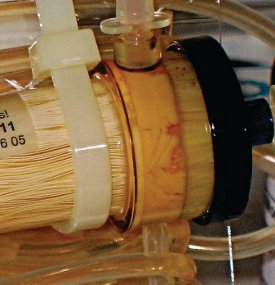Advancements in 3D Cell Culture: A Focus on Hollow Fiber Bioreactors from FiberCell Systems

Introduction: In recent years, the field of cell culture has witnessed a paradigm shift towards more sophisticated and physiologically relevant models. One such innovation gaining prominence is the use of 3D cell culture systems, particularly those employing Hollow Fiber Bioreactors (HFBR) offered by FiberCell Systems. This approach presents a departure from conventional 2D cell culture methods, offering numerous advantages in mimicking the in vivo microenvironment and enhancing the physiological relevance of experimental models. This level of control is crucial for maintaining the viability and functionality of cells, especially in studies involving drug testing, disease modeling, and tissue engineering.
Advantages of 3D Cell Culture with Hollow Fiber Bioreactors:
- Mimicking In Vivo Microenvironment: Hollow Fiber Bioreactors create an environment that closely mimics the in vivo conditions for cells. The hollow fibers serve as a scaffold, allowing cells to grow in three dimensions, promoting cell-cell interactions and tissue-like architecture. This approach better replicates the complex microenvironment of tissues and organs, offering more accurate insights into cell behavior, signaling pathways, and drug responses.
- Increased Surface Area for Cell Growth: The unique design of Hollow Fiber Bioreactors provides a significantly larger surface area for cell attachment and proliferation compared to traditional culture methods. This increased surface area facilitates higher cell densities, enabling the culture of a more representative cell population and enhancing experimental scalability.
- Nutrient and Gas Exchange Efficiency: The hollow fiber design optimizes nutrient and gas exchange between the culture medium and cells. This improved mass transfer capability ensures that cells receive essential nutrients and oxygen efficiently, resulting in healthier and more physiologically relevant cell cultures. This is particularly crucial for long-term experiments and the cultivation of sensitive cell types.
- Microenvironment Control: Hollow Fiber Bioreactors allow for precise control over the microenvironment, including pH, temperature, and oxygen levels.
- Versatility in Cell Types: Hollow Fiber Bioreactors from FiberCell Systems are designed to accommodate a wide range of cell types, including primary cells, stem cells, and established cell lines. This versatility makes them suitable for various applications, from basic research to advanced drug discovery and development.
- Reduced Experimental Variability: The controlled and reproducible conditions provided by Hollow Fiber Bioreactors contribute to reduced experimental variability. This is especially important for obtaining reliable and consistent results in experimental setups, enhancing the overall robustness of studies and increasing the validity of findings.
- Enhanced Drug Screening: 3D cell cultures in Hollow Fiber Bioreactors offer a more accurate platform for drug screening compared to traditional 2D cultures. The 3D microenvironment better recapitulates in vivo conditions, providing more realistic responses to drug treatments. This can lead to the identification of potential drug candidates with higher predictive value for clinical outcomes.
- Cost-Effectiveness and Scalability: While the initial setup of Hollow Fiber Bioreactors may involve some investment, the cost-effectiveness becomes apparent in the long run due to their ability to support high cell densities and prolonged cultures. Additionally, their scalability allows for the parallelization of experiments, making them suitable for high-throughput applications.
Conclusion: The adoption of 3D cell culture using Hollow Fiber Bioreactors from FiberCell Systems represents a significant leap forward in cell culture technology. The advantages offered by this approach, including the ability to mimic in vivo conditions, increased surface area, efficient nutrient and gas exchange, microenvironment control, and versatility in cell types, position it as a powerful tool for advancing research in various fields. As the scientific community continues to seek more physiologically relevant models, Hollow Fiber Bioreactors stand out as a promising solution with the potential to revolutionize the way cell culture experiments are conducted.
References:
-
- Huh, D., Matthews, B. D., & Mammoto, A. et al. (2010). Reconstituting Organ-Level Lung Functions on a Chip. Science, 328(5986), 1662–1668.
- Edmondson, R., Broglie, J. J., & Adcock, A. F. et al. (2014). Three-Dimensional Cell Culture Systems and Their Applications in Drug Discovery and Development. Assay and Drug Development Technologies, 12(4), 207–218.
- Van Duinen, V., Trietsch, S. J., & Joore, J. et al. (2015). Microfluidic 3D cell culture: from tools to tissue models. Current Opinion in Biotechnology, 35, 118–126.
- FiberCell Systems. (2023). Hollow Fiber Bioreactors. Retrieved from https://www.fibercellsystems.com/products/hollow-fiber-bioreactors
